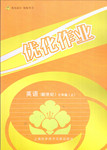题目内容
【题目】The past ages of man have all been carefully labeled by anthropologists(人类学家). Descriptions like “Paleolithic(旧石器时代) Man”, “Neolithic(新石器时代) Man”, etc., neatly sum up whole periods. When the time comes for anthropologists to turn their attention to the twenty-first century, they will surely choose the label “Legless Man”. Histories of the time will go something like this: “In the twenty-first century, people forgot how to use their legs. Men and women moved about in cars, buses and trains from a very early age. There were lifts in all large buildings to prevent people from walking. And the surprising thing is that they didn’t use their legs even when they went on holiday. They built cable railways, ski-lifts and roads to the top of every huge mountain. All the beauty spots on earth were ruined by the presence of large car parks.”
The future history books might also record that we lost the right of using our eyes. In our hurry to get from one place to another, we failed to see anything on the way. Air travel gives you a bird’s-eye view of the world or even less if the wing of the aircraft happens to get in your way. When you travel by car or train, the unclear picture of the countryside constantly slides over the window. When you mention the most impressive place-names in the world, the typical 21st century traveler always says “I’ve been there.”—meaning “I drove through it at 100 miles an hour on the way to somewhere else.”
When you travel at high speeds, the present means nothing: you live mainly in the future because you spend most of your time looking forward to arriving at some other place. But actual arrival, when it is achieved, is meaningless. You want to move on again. By traveling like this, you skip all experience. The traveler on foot, on the other hand, lives in the present. For him traveling and arriving are one and the same thing: he arrives somewhere with every step he makes. He experiences the present moment with his eyes, his ears and the whole of his body. At the end of his journey he feels a delicious physical tiredness. Satisfying sleep will be his: the just reward of all true travelers.
【1】Anthropologists name man nowadays “Legless Man” because _________.
A. people prefer cars, buses and trains
B. people travel without using legs
C. lifts prevent people from walking
D. people use their legs less and less
【2】According to the passage, what might make people lose the right of using their eyes?
A. The modern means of transportation. B. A bird’s-eye view of the world.
C. The unclear sight from the vehicles. D. The fast-paced life style.
【3】From the passage, we know traveling at high speeds means _________.
A. appreciating beautiful scenery B. experiencing life skills
C. focusing on the next destination D. feeling physical tiredness
【4】What does the author intend to tell us?
A. Modern transportation devices have replaced legs.
B. Traveling makes the world a small place.
C. Human’s history develops very fast.
D. The best way to travel is on foot.
【答案】
【1】D
【2】A
【3】C
【4】D
【解析】试题分析:由于种种现代化交通设施、人们不需用脚走路,甚至也不需要用眼看景,出门就坐汽车、公交车、地铁、飞机等等,这些交通方式速度飞快,外边的景物难以看清,最终导致人们忘记用脚、用眼看风景,成为“无脚之人”,什么都经历不到。作者建议最佳的旅游方法是徒步――经历现实。
【1】推理判断题。根据第一段后半部分可知,人类学家把以往年代的人们分别标上旧石器时代、新石器时代人,等等。干脆利落地总结了一个时期。当他们转向21世纪,他们肯定会标上“无脚的人”。因为在21世纪,人们忘了如何用脚走路。男人女人早晚外出都坐车、公共汽车、火车。大楼里由电梯、自动扶梯,不需要人们走路。即使度假期间,他们也不用脚。他们筑有缆车道、滑雪电梯和直通山顶的路。所有的风景旅游区都有大型的汽车停车场。因此推断人类学家给如今的人命名为“无脚的人”是应为人们越来越少的使用自己的脚。故选D。
【2】推理判断题。根据第二段内容可知,未来的历史书也许会记录下我们也失去了用眼的权利,由一个地方匆忙转向另一地方时,路上什么我们都没有见到。乘飞机你只能俯视世界,火车,汽车,只见外界朦胧景象掠过窗子。海上旅游,只见到海。“我到过那里”此话含义就是“我以一小时一百英里在去某某地方时经过那里”。因此推断现代交通工具让人们失去了用眼的权利。故选A。
【3】推理判断题。根据最后一段第一句话When you travel at high speeds, the present means nothing: you live mainly in the future because you spend most of your time looking forward to arriving at some other place.可知,当你高速旅行时,现在就是零,因为你大部分时间盯在前面到达的某个地方,因此你总是生活在未来。真到了目的地,又没有意义了,你还要再向前进。因此推断高速旅行的意思是人们总是集中在下一个目的。故选C。
【4】写作目的题。纵观全文可知,文章一、二段分别讲述了现代旅行可不用脚、不用眼等情况。第三段讲述人们只知向前向前,一切经历都停滞,现实不再是现实。而用脚走路的旅行者总是生活在现在,对他来说旅行和到达是一回事,他一步一步走到某地,用眼睛、耳朵,以至整个身体去体验每一时刻、旅行终点,他感到全身舒坦和愉悦的疲劳,美美享受满足的酣睡;一切真正旅行者的回报。因此推断作者写文章的目的是告诉读者走路是旅行的最佳方式。故选D。

 培优三好生系列答案
培优三好生系列答案 优化作业上海科技文献出版社系列答案
优化作业上海科技文献出版社系列答案